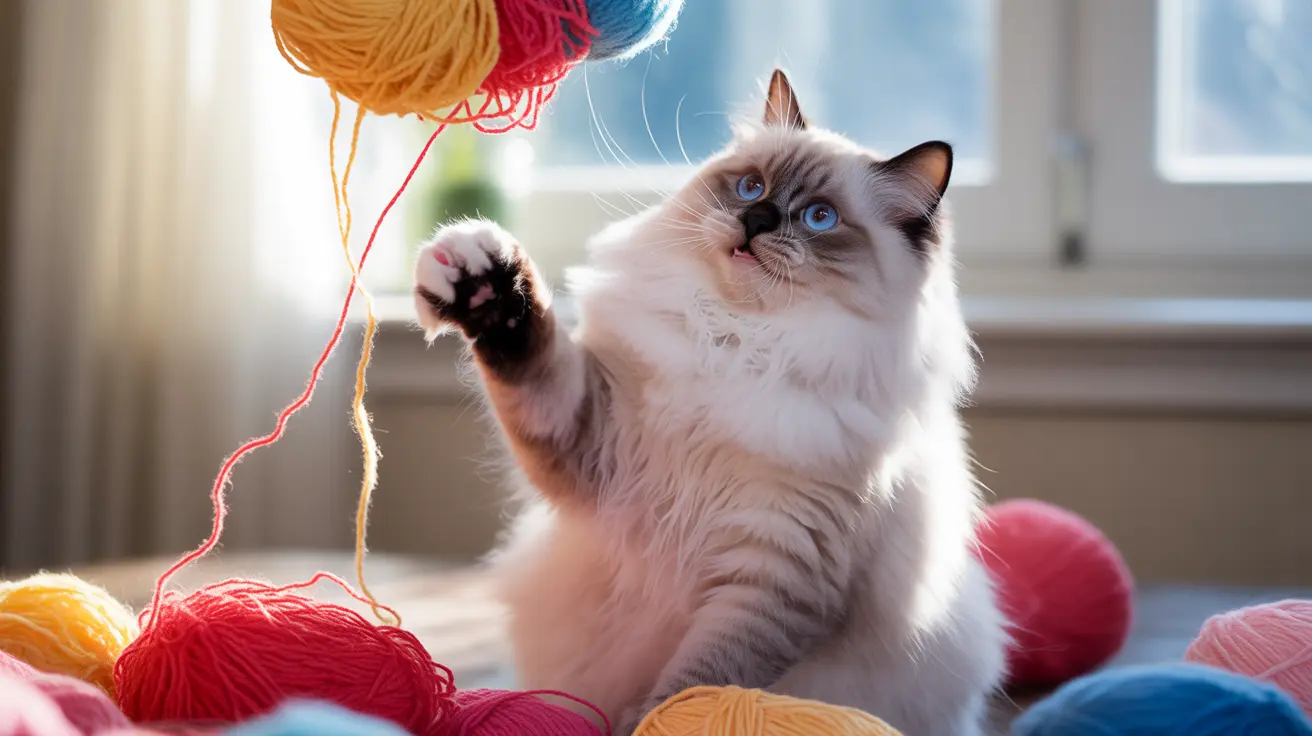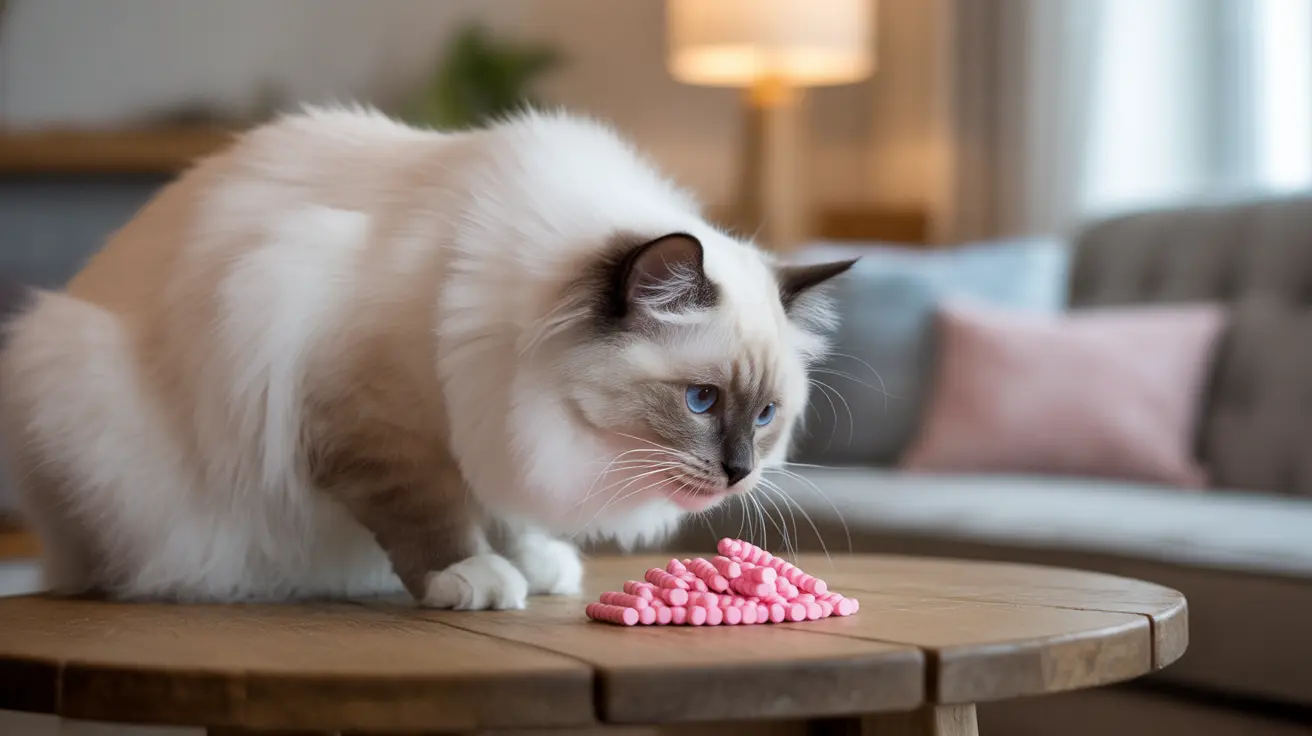The 5 Key Factors Influencing Cat Personality and Behavior: Understanding What Makes Your Feline Unique
Every cat owner knows that felines possess distinctly individual personalities—some are social butterflies who greet every visitor, while others prefer the solitude of a quiet corner. Understanding the factors influencing cat personality and behavior is crucial for creating harmonious relationships between humans and their feline companions. These personality differences aren't just quirks; they significantly impact a cat's well-being, health outcomes, and likelihood of finding a permanent home.
Research reveals that a cat's temperament affects both their physical health and behavioral outcomes. Fearful cats may experience compromised immune function, making them more susceptible to respiratory infections, while bolder cats face higher risks of acquiring conditions like FIV through aggressive encounters. Meanwhile, friendly cats show increased vulnerability to feline leukemia through close social contact. With 38% of UK cat owners surrendering their pets due to behavioral issues—44% of which involve aggression—understanding what shapes feline personality becomes essential for successful pet ownership and animal welfare.
The Father's Genetic Legacy: Paternal Inheritance of Social Traits
One of the most significant factors influencing cat personality and behavior lies in paternal inheritance. Research demonstrates that kittens inherit crucial sociability and boldness traits directly from their fathers, even without direct contact or early socialization experiences. This genetic influence proves so powerful that kittens born to friendlier fathers display marked friendliness toward humans and demonstrate greater boldness when encountering novel objects or situations.
The implications for breeders and cat owners are substantial. When selecting breeding pairs, the father's temperament should receive equal consideration alongside the mother's traits. Friendly, confident male cats are more likely to produce offspring that adapt well to human households and exhibit the social behaviors that make for successful pet relationships. This paternal influence operates independently of environmental factors, suggesting a strong genetic component to feline sociability.
The Critical Imprinting Period: Early Life Socialization
The window between 2 and 12 weeks of age represents the most crucial period for shaping a cat's personality and social behavior. During this critical imprinting phase, positive human contact and diverse experiences significantly influence whether a kitten develops into a friendly, confident adult cat or remains fearful and withdrawn. Research confirms the importance of this socialization period extends until approximately age 2, though the long-term stability of these effects into older adulthood requires further investigation.
Practical Socialization Strategies
Effective kitten socialization involves gradual, positive exposure to various stimuli during this sensitive period. Breeders and new cat owners should focus on gentle handling, exposure to different sounds and textures, and interactions with multiple people of varying ages. The key lies in maintaining positive associations—forcing interactions or overwhelming a kitten can create lasting negative impressions that persist into adulthood.
For kittens who miss this critical window, socialization remains possible but requires more patience and gradual approaches. Adult cats can still learn to trust and form bonds, though the process typically takes longer and may never achieve the same level of social confidence as properly socialized kittens.
Social Environment and Companion Relationships
A cat's social circle during early development significantly impacts their ability to form bonds and accept new companions throughout their lives. Kittens who interact with siblings, other cats, and different animal species during their formative weeks develop better social skills and greater flexibility in accepting new household additions later.
Managing Multi-Pet Households
When introducing new animals to established cats, understanding their early socialization history provides valuable insight into potential success. Cats who experienced diverse social interactions during kittenhood typically adapt more readily to new companions, while those with limited early exposure may require more careful, gradual introduction processes.
Research indicates that cats living alone show higher eye temperatures, suggesting increased stress sensitivity compared to cats sharing homes with other felines. This finding supports the benefits of multi-cat households for many felines, though individual personality differences must guide specific decisions about companion animals.
Genetic Factors: Breed and Physical Characteristics
Breed differences represent another significant factor influencing cat personality and behavior, often proving a better predictor of temperament variations than coat color alone. The heritability of temperament among cats ranges from 0.40 to 0.53, indicating substantial genetic influence on personality development. For example, British Shorthair cats tend toward less aggressive, less active temperaments with reduced behavioral problems and lower sociability levels, potentially making them suitable companions for more introverted human families.
The Role of Physical Appearance
Physical characteristics may correlate with personality traits through the "domestication syndrome" observed across multiple species. This phenomenon links physical changes with behavioral modifications as animals become more domesticated. Orange male cats often display larger size and increased social dominance, with owner reports indicating greater friendliness toward humans. Conversely, tortoiseshell, calico, and "torbie" cats frequently demonstrate more aggressive tendencies toward people.
Long-haired cats typically show reduced activity levels, possibly resulting from selective breeding of docile temperaments that tolerate grooming requirements. However, owner expectations and stereotypes may influence these observations, highlighting the need for more objective research approaches beyond self-reported surveys.
The Self-Domestication Process: How Cats Became Companions
Understanding the factors influencing cat personality and behavior requires examining how domestic cats evolved alongside humans. Unlike dogs, which humans selectively bred for specific roles and traits, cats largely self-domesticated through natural selection. This process favored cats with reduced fear responses toward humans while maintaining much of their independent, predatory nature.
This self-domestication history explains many fundamental differences between feline and canine behavior. Cats retained greater autonomy and selective sociability, developing personalities that balance companionship with independence. The domestication process selected for cats capable of living alongside humans while maintaining their hunting abilities and territorial instincts, creating the complex personality profiles observed in modern domestic cats.
Biological and Neurological Influences
Several biological factors contribute to individual personality variations among cats. The oxytocin receptor gene, which influences attachment behaviors in humans and dogs, also predicts sociability levels in cats. Specific gene variations associate with traits like irritability, dominance, and moodiness, providing molecular explanations for personality differences.
Stress reactivity, measured through eye temperature, serves as another biological indicator of personality traits. Higher ocular temperatures predict increased sensitivity to stress, correlating with fearful or aggressive behaviors. Older cats typically show elevated eye temperatures, suggesting increased stress sensitivity with advancing age and highlighting the importance of environmental management for senior felines.
Frequently Asked Questions
- How early can you determine a kitten's personality?
Basic personality traits begin emerging around 3-7 weeks of age during the critical socialization period. However, full personality development continues until approximately age 2. Early indicators include responses to handling, novel objects, and social interactions, though these traits can still be influenced through proper socialization.
- Can an adult cat's personality change after adoption?
Yes, adult cats can adapt and modify their behavior patterns, though changes typically occur more gradually than in kittens. Consistent positive experiences, reduced stress, and patient socialization can help fearful or aggressive cats become more confident and social, though they may never achieve the same flexibility as properly socialized kittens.
- Do orange cats really have different personalities than other colors?
Owner surveys consistently report orange cats as more friendly toward humans, while tortoiseshell and calico cats appear more aggressive. However, these observations may reflect owner expectations and stereotypes rather than true genetic correlations. Breed characteristics often prove more reliable predictors of personality than coat color alone.
- Is it better to adopt littermates or introduce cats separately?
The decision depends on individual circumstances and the cats' early socialization experiences. Littermates often adjust well together, but proper introduction protocols remain important. Cats with good early socialization typically adapt better to new companions, regardless of their relationship history.
- How does a cat's father influence personality if he's not present during kittenhood?
Genetic inheritance explains paternal influence on kitten personality. Kittens inherit sociability and boldness traits through their father's genes, independent of environmental contact. This genetic component affects temperament even when fathers have no direct interaction with their offspring.
- What should I look for when choosing a kitten's personality match for my lifestyle?
Consider your household activity level, social preferences, and experience with cats. Observe how potential kittens respond to handling, new situations, and human interaction. Discuss the parents' temperaments with breeders, and consider breed characteristics that align with your lifestyle and expectations.
- Can stress during pregnancy affect kitten personalities?
While the provided research doesn't directly address maternal stress effects, the documented influence of paternal traits and early environmental factors suggests prenatal and early postnatal experiences likely impact personality development. Creating calm, stable environments for pregnant and nursing cats supports optimal kitten development.
Conclusion
The factors influencing cat personality and behavior represent a complex interplay of genetics, early experiences, and ongoing environmental influences. From paternal inheritance of social traits to the critical importance of early socialization, understanding these elements empowers cat owners, breeders, and animal welfare professionals to make informed decisions that promote feline well-being and successful human-cat relationships.
While genetics provide the foundation through breed characteristics, paternal inheritance, and physical traits, environmental factors like early socialization and social experiences shape how these genetic predispositions manifest in adult cats. By recognizing and working with these natural influences rather than against them, we can help create confident, well-adjusted feline companions while appreciating the unique personality that makes each cat special.






